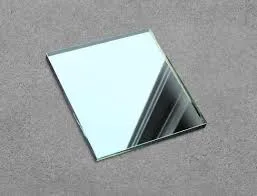

Float Glass Production Line An Overview
The float glass production line is an industrial process used to manufacture high-quality glass sheets, which are vital in various applications including windows, mirrors, and glass facades. The float glass technique was invented by Sir Alastair Pilkington in the 1960s and has since revolutionized the glass industry. This process is characterized by its simplicity, efficiency, and ability to produce glass of uniform thickness and clarity.
The float glass production line consists of several key stages melting, forming, annealing, and cutting. The journey begins in the furnace, where raw materials such as silica sand, soda ash, and limestone are mixed and heated to temperatures exceeding 1600 degrees Celsius. In this molten state, the glass becomes highly viscous and is then carefully poured onto a bed of molten tin. The tin serves not only as a floating medium but also helps achieve a perfectly flat surface on the glass.
As the molten glass spreads out on the tin, it forms a continuous ribbon that moves forward through the production line. This stage is crucial because it allows for the precise control of thickness. Adjustments can be made in the flow of the molten glass to achieve desired specifications. The ribbon of glass then enters the lehr, a specialized annealing oven, where it is gradually cooled to relieve internal stresses. This cooling process is essential for ensuring the glass attains the required strength and durability.

Once cooled, the glass sheet emerges from the lehr and is subjected to quality control checks. Advanced technologies like laser measurements and automated visual inspections are employed to identify defects such as bubbles or uneven thickness. Glass that meets quality standards is then cut into specified sizes for further processing, while any defective pieces are recycled back into the production cycle.
The float glass production line is known for its environmental considerations as well. Many manufacturers have implemented energy-efficient practices, such as using waste heat recovery systems and optimizing raw material usage. Additionally, advancements in technology have led to the development of low-emissivity (low-e) glass, which enhances energy efficiency in buildings and reduces the overall carbon footprint.
In conclusion, the float glass production line plays a crucial role in supplying high-quality glass for a multitude of applications. Its efficiency, coupled with advancements in technology and environmental considerations, makes it a cornerstone of modern glass manufacturing. As demands for energy-efficient and sustainable products continue to grow, the float glass industry is likely to evolve further, ensuring its relevance in a changing world.